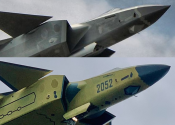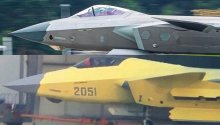I doubt the J-31 will ever enter service.
I think its naval derivative, the J-35, will join the J-15 in active service with the PLANAF, whereas the PLAAF will focus on fielding a mix of J-20s and J-16s. I expect the J-15 and J-35 to be procured in incremental quantities and, given the PLANAF's divestment of its shore-based fleet, to track the expansion of the carrier fleet.
The J-15 and J-16 can carry a higher payload than the J-20 and the J-35, and will serve as long-range maritime / strike fighters, as well as EW/SEAD/DEAD platforms in their "D" variants.
The J-20 and J-35 will primarily serve in an air superiority role, with the latter also having a main maritime strike mission.
I expect the AESA-equipped J-10C and J-11B (with upgrade) to be retained for a while, but for all other tactical combat aircraft types to be retired within the decade.
Overall, I expect the PLAAF to stabilize at a force of ~55 / ~57 combat Air Brigades with ~1,650 / ~1,710 first-line aircraft, with the PLANAF adding ~48 J-15 and J-35 for each Type 003/004/+ carrier subsequently added to the fleet.
Just 1700 aircraft is kinda low when US and allies in the region can muster upto 3500. China will atleast have to match that to gain parity.



